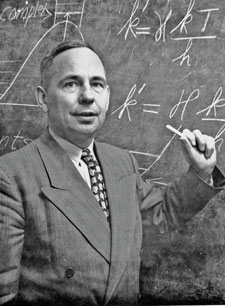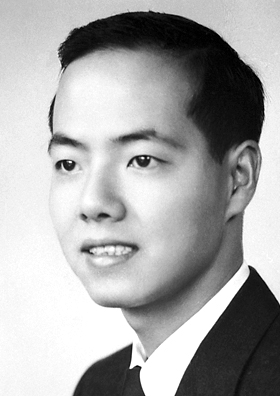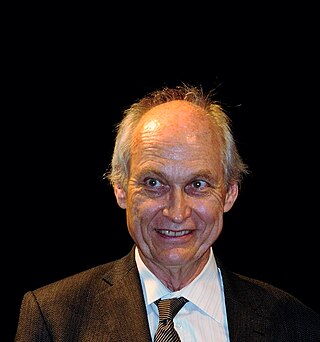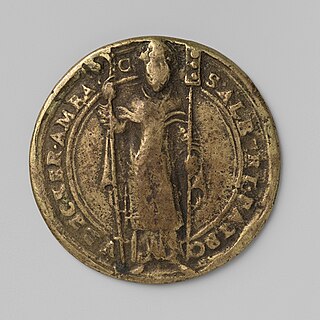Related Research Articles

The relationship between religion and science involves discussions that interconnect the study of the natural world, history, philosophy, and theology. Even though the ancient and medieval worlds did not have conceptions resembling the modern understandings of "science" or of "religion", certain elements of modern ideas on the subject recur throughout history. The pair-structured phrases "religion and science" and "science and religion" first emerged in the literature during the 19th century. This coincided with the refining of "science" and of "religion" as distinct concepts in the preceding few centuries—partly due to professionalization of the sciences, the Protestant Reformation, colonization, and globalization. Since then the relationship between science and religion has been characterized in terms of "conflict", "harmony", "complexity", and "mutual independence", among others.

Natural science is one of the branches of science concerned with the description, understanding and prediction of natural phenomena, based on empirical evidence from observation and experimentation. Mechanisms such as peer review and repeatability of findings are used to try to ensure the validity of scientific advances.

Henry Eyring was a Mexico-born United States theoretical chemist whose primary contribution was in the study of chemical reaction rates and intermediates. Eyring developed the Absolute Rate Theory or Transition state theory of chemical reactions, connecting the fields of chemistry and physics through atomic theory, quantum theory, and statistical mechanics.

Tsung-Dao Lee is a Chinese-American physicist, known for his work on parity violation, the Lee–Yang theorem, particle physics, relativistic heavy ion (RHIC) physics, nontopological solitons, and soliton stars. He was a university professor emeritus at Columbia University in New York City, where he taught from 1953 until his retirement in 2012.

James Watson Cronin was an American particle physicist.

Michael S. Turner is an American theoretical cosmologist who coined the term dark energy in 1998. He is the Rauner Distinguished Service Professor Emeritus of Physics at the University of Chicago, having previously served as the Bruce V. & Diana M. Rauner Distinguished Service Professor, and as the assistant director for Mathematical and Physical Sciences for the US National Science Foundation.

Makoto Kobayashi is a Japanese physicist known for his work on CP-violation who was awarded one-fourth of the 2008 Nobel Prize in Physics "for the discovery of the origin of the broken symmetry which predicts the existence of at least three families of quarks in nature."

Toshihide Maskawa was a Japanese theoretical physicist known for his work on CP-violation who was awarded one quarter of the 2008 Nobel Prize in Physics "for the discovery of the origin of the broken symmetry which predicts the existence of at least three families of quarks in nature."
Sergio Ferrara is an Italian physicist working on theoretical physics of elementary particles and mathematical physics. He is renowned for the discovery of theories introducing supersymmetry as a symmetry of elementary particles and of supergravity, the first significant extension of Einstein's general relativity, based on the principle of "local supersymmetry". He is an emeritus staff member at CERN and a professor emeritus at the University of California, Los Angeles.

William Grosvenor Pollard (1911–1989) was an American physicist and an Episcopal priest. He started his career as a professor of physics in 1936 at the University of Tennessee. In 1946 he championed the organization of the Oak Ridge Institute of Nuclear Studies (ORINS). He was its executive director until 1974. He was ordained as a priest in 1954. He authored and co-authored a significant amount of material in the areas of Christianity and Science and Religion found in books, book chapters, and journal articles. He was sometimes referred to as the "atomic deacon".
Modern Physics and Ancient Faith (2003) is a book by Stephen M. Barr, a physicist from the University of Delaware and frequent contributor to First Things. This book is "an extended attack" on what Barr calls scientific materialism. National Review says of the book: "[A] lucid and engaging survey of modern physics and its relation to religious belief.. .. Barr has produced a stunning tour de force. .. [a] scientific and philosophical breakthrough."

Anthony Ichiro Sanda is a Japanese-American particle physicist. Along with Ikaros Bigi, he was awarded the 2004 Sakurai Prize for his work on CP violation and B meson decays.

The relationship between science and the Catholic Church is a widely debated subject. Historically, the Catholic Church has been a patron of sciences. It has been prolific in the foundation and funding of schools, universities, and hospitals, and many clergy have been active in the sciences. Some historians of science such as Pierre Duhem credit medieval Catholic mathematicians and philosophers such as John Buridan, Nicole Oresme, and Roger Bacon as the founders of modern science. Duhem found "the mechanics and physics, of which modern times are justifiably proud, to proceed by an uninterrupted series of scarcely perceptible improvements from doctrines professed in the heart of the medieval schools." Historian John Heilbron says that "The Roman Catholic Church gave more financial and social support to the study of astronomy for over six centuries, from the recovery of ancient learning during the late Middle Ages into the Enlightenment, than any other, and probably all, other Institutions." The conflict thesis and other critiques emphasize the historical or contemporary conflict between the Catholic Church and science, citing, in particular, the trial of Galileo as evidence. For its part, the Catholic Church teaches that science and the Christian faith are complementary, as can be seen from the Catechism of the Catholic Church which states in regards to faith and science:
Though faith is above reason, there can never be any real discrepancy between faith and reason. Since the same God who reveals mysteries and infuses faith has bestowed the light of reason on the human mind, God cannot deny himself, nor can truth ever contradict truth. ... Consequently, methodical research in all branches of knowledge, provided it is carried out in a truly scientific manner and does not override moral laws, can never conflict with the faith, because the things of the world and the things of faith derive from the same God. The humble and persevering investigator of the secrets of nature is being led, as it were, by the hand of God despite himself, for it is God, the conserver of all things, who made them what they are.
The Trotter Prize is awarded at Texas A&M University and is part of an endowed lecture series. It is awarded "for pioneering contributions to the understanding of the role of information, complexity and inference in illuminating the mechanisms and wonder of nature" and includes The Trotter Lecture which "seeks to reveal connections between science and religion, often viewed in academia as non-overlapping, if not rival, worldviews.
Michael Wulf Friedlander was a South African-born American physicist and skeptic. Friedlander was professor emeritus of physics at Washington University in St. Louis. His research involved the study of cosmic rays and gamma ray astronomy. He is the author of the book At The Fringes Of Science (1998), a scholarly study of fringe science. The book is notable for its criticism of the ideas of Immanuel Velikovsky.

The Society of Catholic Scientists is an organization of Catholic scientists formed to promote fellowship among Catholic scientists. Founded in 2016, it promotes the practice of the Gold Mass.
The Bartol Research Institute is a scientific research institution at the Department of Physics and Astronomy of the University of Delaware. Its members belong to the faculty of the University of Delaware and perform research in areas such as astroparticle physics, astrophysics, cosmology, particle physics, and space science.
References
- ↑ "Nuclear and High-Energy Physics". Scientific and Technical Aerospace Reports. 17 (1). National Aeronautics and Space Administration: 392. January 8, 1979.
- ↑ "Stephen Barr, Professor Emeritus". University of Delaware. Retrieved June 2, 2020.
- ↑ "Stephen M. Barr". hyperphysics.phy-astr.gsu.edu. Retrieved April 16, 2020.
- ↑ "Stephen M. Barr's Personal Website".
- ↑ "Stephen M. Barr | Authors". First Things . Retrieved December 9, 2016.
- ↑ "Our Leadership". www.catholicscientists.org. Society of Catholic Scientists. Retrieved February 22, 2020.
- ↑ "Obituaries". Columbia College Today. May 2004. Retrieved May 30, 2020.
- ↑ Weldon, Stephen P. (December 1, 2004). "Stephen M. Barr: Modern Physics and Ancient Faith". Isis . 95 (4): 742–743. doi:10.1086/432348. ISSN 0021-1753.
- ↑ Leigh, Egbert Giles (April 9, 2014). "S. M. Barr's Modern Physics and Ancient Faith: Are the Universe, Physical Law and Human Thought Proofs of God's Existence?". Evolution: Education and Outreach. 7 (1). doi: 10.1186/s12052-014-0008-1 . ISSN 1936-6434.
- ↑ King Jr, John B. (April 2, 2016). "Modern Physics and Ancient Faith, Stephen M. Barr". Theology and Science . 14 (2): 219–221. doi:10.1080/14746700.2016.1156333. ISSN 1474-6700. S2CID 148218846.
- ↑ Barr, Stephen M. (October 5, 2023). "Contrary to Popular Belief: The Catholic Church Has No Quarrel With Evolution and Never Condemned It". Church Life Journal. Retrieved October 13, 2023.